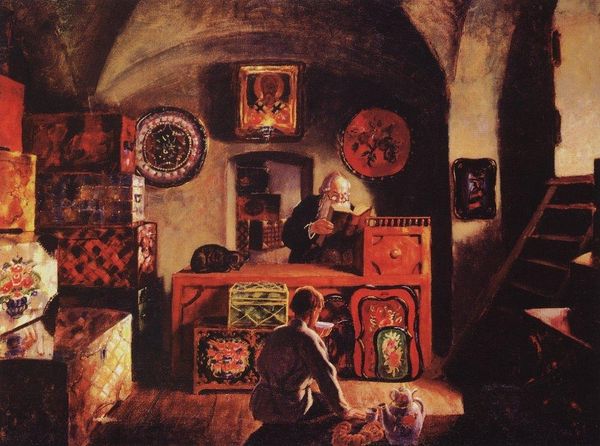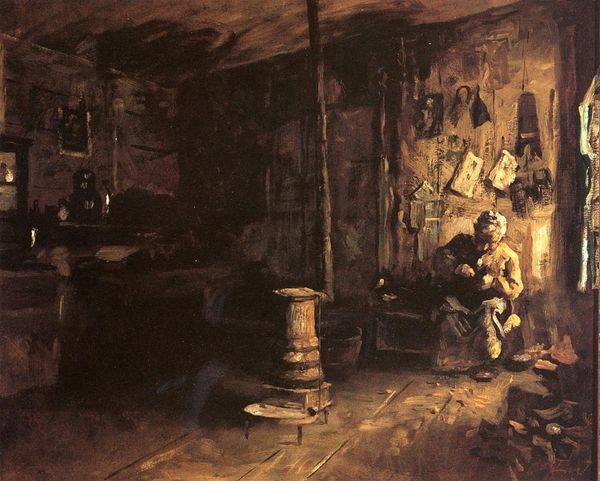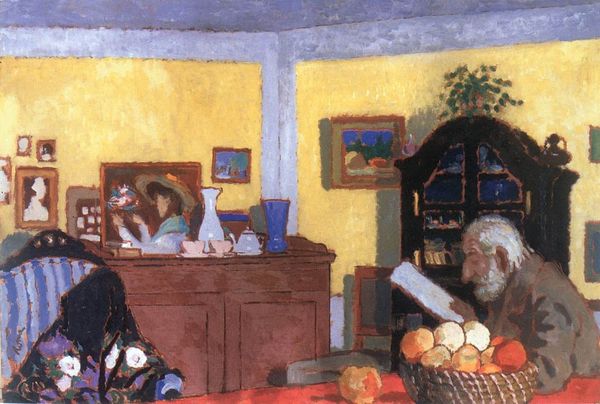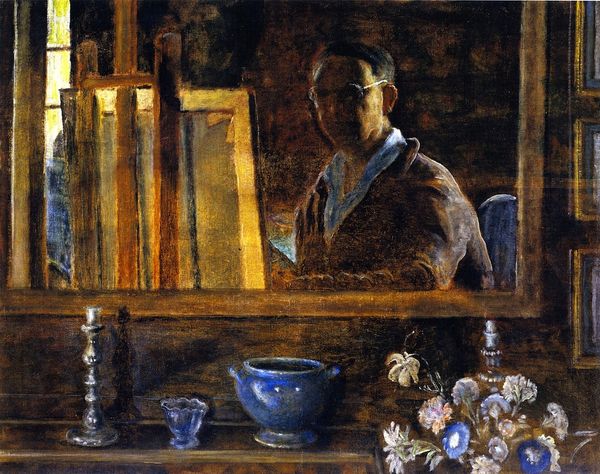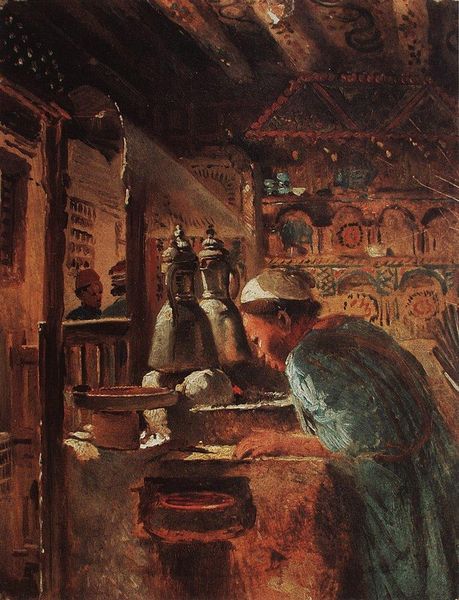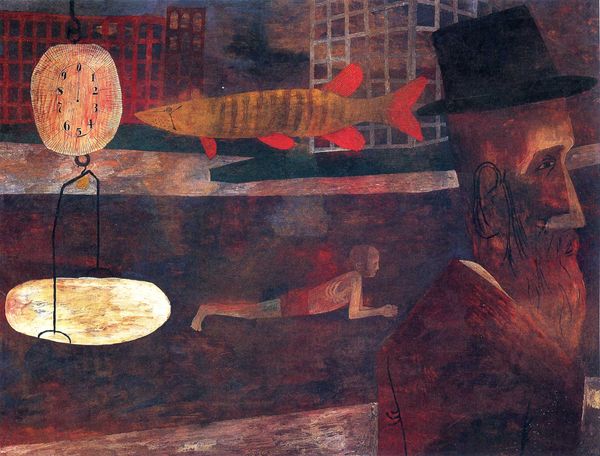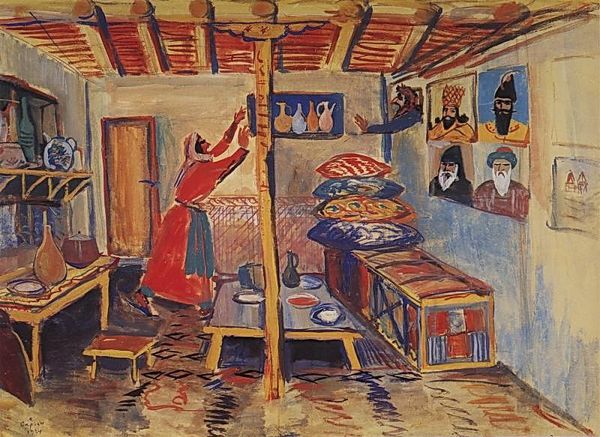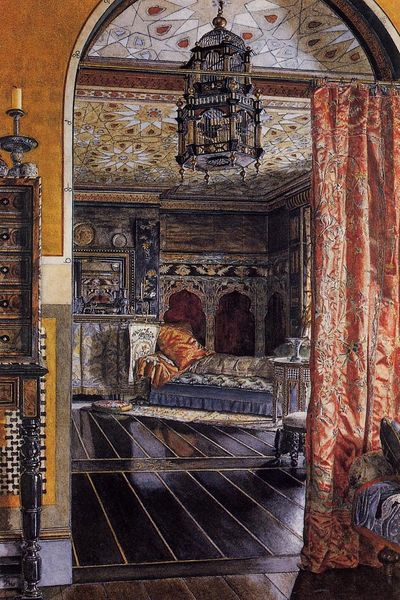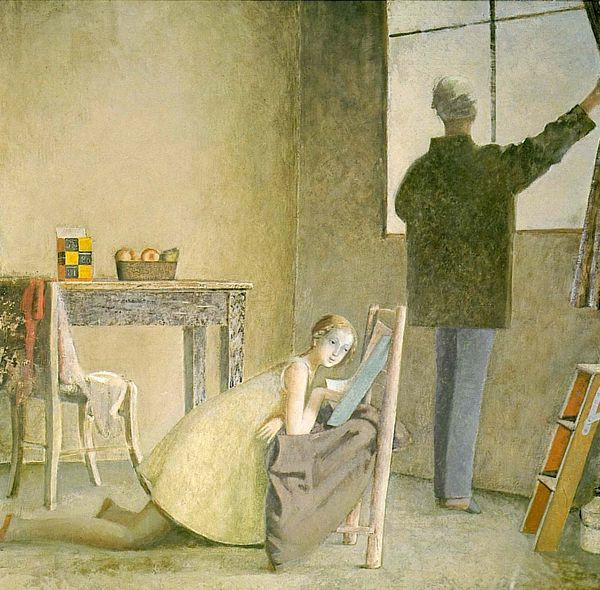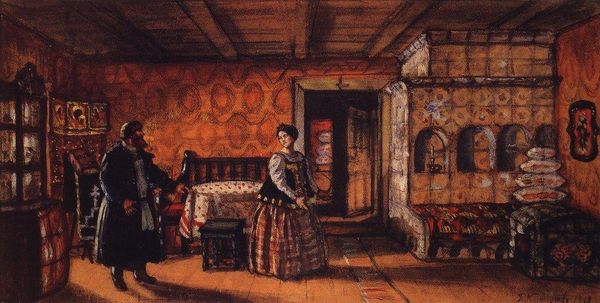
painting, oil-paint, impasto
#
portrait
#
painting
#
oil-paint
#
painted
#
oil painting
#
impasto
#
male-portraits
#
russian-avant-garde
#
genre-painting
#
portrait art
Copyright: Public domain
Curator: This is Boris Kustodiev’s “Merchant,” an oil on canvas created in 1918. It gives us a peek inside the life of the merchant class in Russia. Editor: Immediately, I’m struck by how the geometric structure contrasts with the loose brushstrokes. It's almost claustrophobic, this jumble of chests and icons within the cramped space. The color palette, though muted, is strangely comforting. Curator: Notice the iconography, specifically the elaborate designs and depictions on the chests, possibly indicating the spiritual wealth and tradition being passed through generations. How do you interpret that detail? Editor: Well, the boxes themselves seem to multiply the depicted contents, creating a complex arrangement of rectangular forms punctuated by circular icon forms— almost aggressively dimensional in an abstract way. This echoes the structuralist reading of repeated forms containing latent meaning within their structure. Curator: Yes! Consider the cultural implications as well. The open book, the teapot – they become signifiers for learning, trade, and communal family heritage. Editor: Right, I see what you're getting at. I read the compositional layering as signaling societal stability that also manages to feel precarious, as if any small push could tumble everything. But this effect might also come from Kustodiev’s skillful rendering of material textures, using impasto to achieve that tactility and luminosity. Curator: I would argue that the slightly elevated view and stacked objects suggest that this space also acts as an intimate family vault where traditions are safe guarded from outsiders, and this safety is achieved in that space. Editor: Perhaps... Though I still lean into my reading of visual instability. But you have made me reconsider. This viewing experience is not purely subjective—the forms really make us feel something more specific. Curator: And that is a very good point. We are clearly invited into a specific emotional context using visual prompts like impasto that make this world not just observable but sensuous. Editor: Ultimately, this painting seems to synthesize cultural heritage and psychological state with simple painterly mechanics, that gives that visual depth to it. Curator: Yes, this exploration helps reveal so much about visual continuity within a time of turmoil and cultural changes that invites continuous, contemporary conversations.
Comments
No comments
Be the first to comment and join the conversation on the ultimate creative platform.
